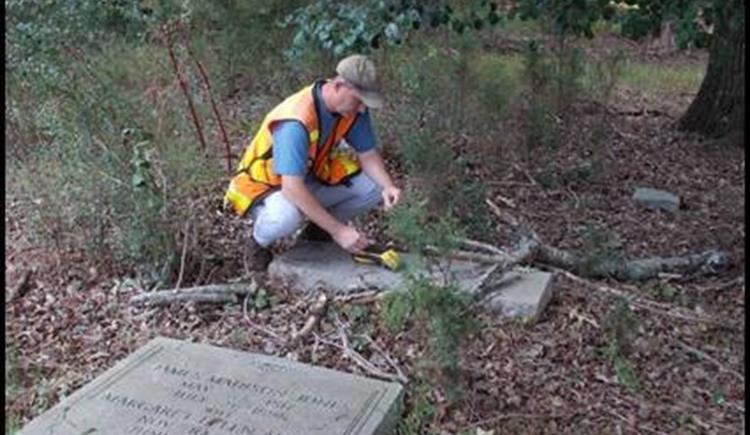NCDOT Partnering with ITRE to Map Unmarked Burial Sites

NCDOT Archaeologist mapping Jones Cemetery in Wake County
RALEIGH – The N.C. Department of Transportation announced a partnership with N.C. State University’s Institute for Transportation Research and Education to conduct groundbreaking research aimed at mapping unmarked burial sites belonging to historically marginalized groups.
“This partnership is important as it will help in preserving and honoring the heritage of these communities, ensuring that their stories are not forgotten,” said Tunya Smith, director of NCDOT’s Office of Civil Rights. “Additionally, this research will contribute to creating a more comprehensive understanding of our state’s history and heritage.”
The research project, led by NCDOT’s Office of Civil Rights and N.C. State, is scheduled to start this summer and extend through the summer of 2026. The project will focus on identifying and mapping Indigenous burial sites, graves of formerly enslaved individuals, and historic African American cemeteries.
Researchers with NCDOT and N.C. State University’s ITRE will begin the project by trying to identify cemeteries in Edgecombe County, which sits about 60 miles east of Raleigh. An advisory committee will gather feedback from the community and work to preserve its cultural heritage.
Edgecombe County officials have shown interest in identifying, preserving and developing cultural interpretations for the burials of enslaved peoples and historic African American cemeteries. People in Edgecombe County have also engaged in discussions as part of the Uplift NC program supported by the North Carolina Chamber of Commerce.
The unmarked burial sites have long faced disproportionate risks and vulnerabilities as North Carolina’s popularity leads to increased commercial and residential development and transportation projects. Experts are concerned that development coupled with more frequent storms could make it more difficult to identify and preserve these burial sites.
The cemetery mapping initiative will involve a thorough literature and policy review, followed by a community outreach effort in Edgecombe County to document sites that may only be known through word of mouth and generational knowledge.
But officials hope to eventually expand the project beyond Edgecombe County.
“A part of Edgecombe County was absorbed by the formation of Wilson County in 1855, which demonstrates that neighboring areas are likely to be impacted by this research,” Smith said. “Family histories are not confined to county lines. If you have roots in eastern North Carolina, you may find that you have a story to share with this project team.”
Dr. Tim Brock and his team from N.C. State’s ITRE will lead the investigative research activities, with support from the North Carolina Research and Engagement Group.
This story was also featured by Goldsboro Daily News, FOX8 WGHP, Hoodline Charlotte, News Argus, and WWAY.